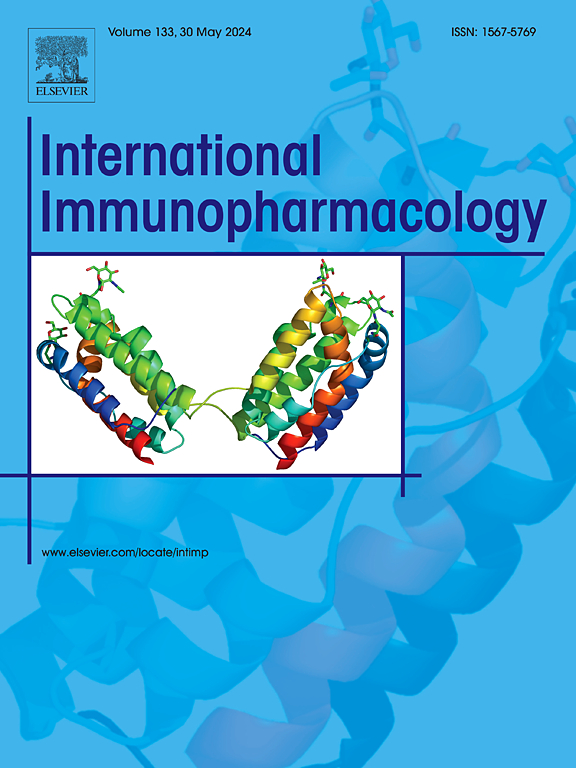MiR-135a-5p/STAT6-mediated EMT regulates IL-4 secretion in non-small cell lung cancer to affect M2-like TAM polarization
IF 4.8
2区 医学
Q2 IMMUNOLOGY
引用次数: 0
Abstract
Arginase 1 (Arg1), a key indicator of M2 polarization in tumor-associated macrophages (TAMs), plays a crucial role in inhibiting T-cell activation and proliferation by depleting local arginine levels, thereby facilitating tumor immune escape. The epithelial–mesenchymal transition (EMT), a fundamental biological process in cancer proliferation and progression, is intricately linked to the interactions between TAMs and cancer cells. However, the underlying mechanisms of EMT and how EMT-programmed cancer cells specifically modulate Arg1 expression in M2-like TAMs remain incompletely understood. Our comprehensive analysis confirmed that Arg1 expression was significantly upregulated in non-small cell lung cancer (NSCLC) tissues, and patients with elevated Arg1 levels exhibited a notably shorter overall survival. Furthermore, alterations in miR-135a-5p expression were found to profoundly influence the proliferation, migration, invasion, EMT, and apoptotic processes of NSCLC cells. Mechanistically, miR-135a-5p post-transcriptionally inhibited STAT6 expression by regulating its 3′-untranslated region (3’-UTR). Subsequently, the miR-135a-5p/STAT6 axis inhibited GATA3-mediated interleukin-4 (IL-4) secretion from NSCLC cells, ultimately suppressing Arg1 expression in M2-like TAMs. MiR-135a-5p may exert pivotal roles in modulating STAT6-induced EMT in tumor cells, which subsequently impacts IL-4-related Arg1 expression and M2 polarization of TAMs in NSCLC. This, in turn, reduced the capacity of M2-like TAMs to secrete tumor-promoting cytokines. Therefore, Arg1 holds potential as a diagnostic biomarker for NSCLC, and miR-135a-5p may emerge as a promising target for inhibiting NSCLC progression.

求助全文
约1分钟内获得全文
求助全文
来源期刊
CiteScore
8.40
自引率
3.60%
发文量
935
审稿时长
53 days
期刊介绍:
International Immunopharmacology is the primary vehicle for the publication of original research papers pertinent to the overlapping areas of immunology, pharmacology, cytokine biology, immunotherapy, immunopathology and immunotoxicology. Review articles that encompass these subjects are also welcome.
The subject material appropriate for submission includes:
• Clinical studies employing immunotherapy of any type including the use of: bacterial and chemical agents; thymic hormones, interferon, lymphokines, etc., in transplantation and diseases such as cancer, immunodeficiency, chronic infection and allergic, inflammatory or autoimmune disorders.
• Studies on the mechanisms of action of these agents for specific parameters of immune competence as well as the overall clinical state.
• Pre-clinical animal studies and in vitro studies on mechanisms of action with immunopotentiators, immunomodulators, immunoadjuvants and other pharmacological agents active on cells participating in immune or allergic responses.
• Pharmacological compounds, microbial products and toxicological agents that affect the lymphoid system, and their mechanisms of action.
• Agents that activate genes or modify transcription and translation within the immune response.
• Substances activated, generated, or released through immunologic or related pathways that are pharmacologically active.
• Production, function and regulation of cytokines and their receptors.
• Classical pharmacological studies on the effects of chemokines and bioactive factors released during immunological reactions.

 求助内容:
求助内容: 应助结果提醒方式:
应助结果提醒方式:


